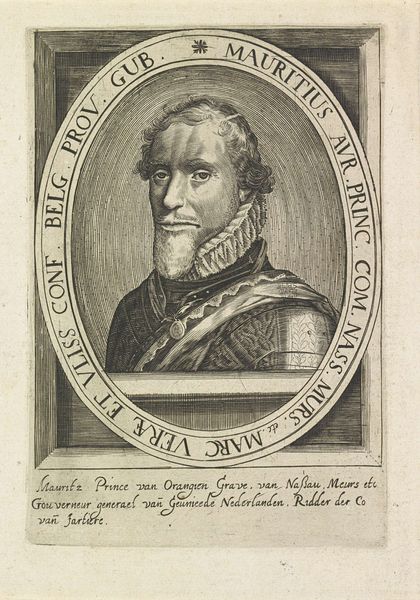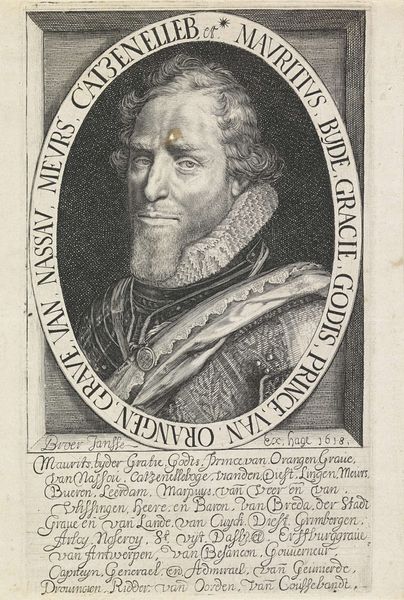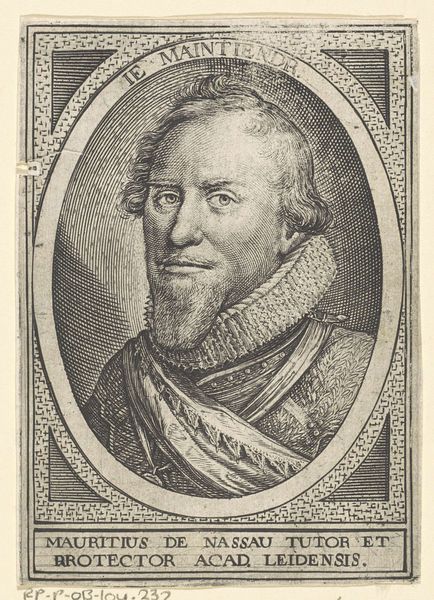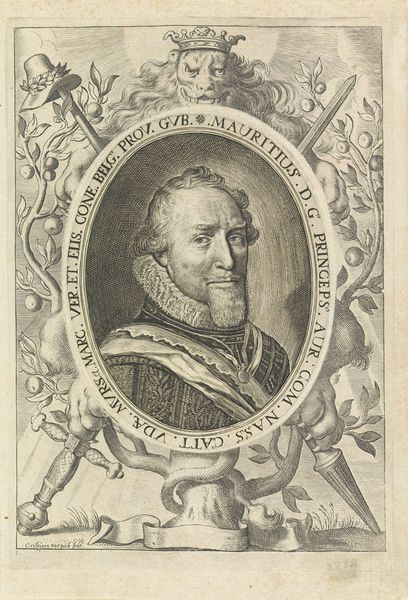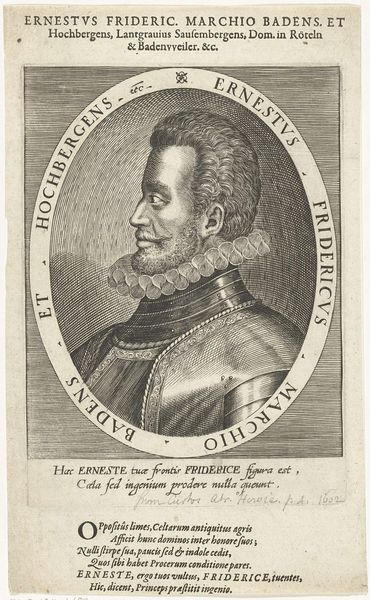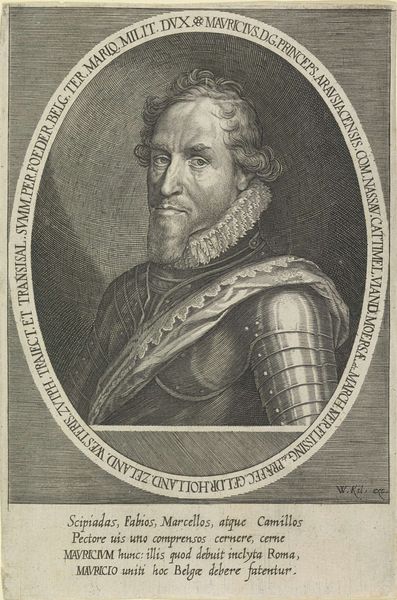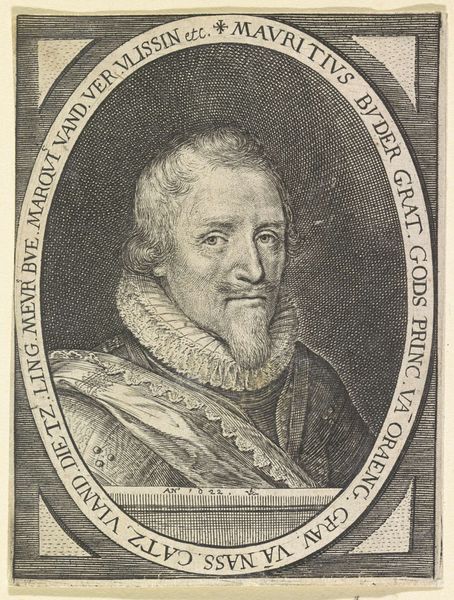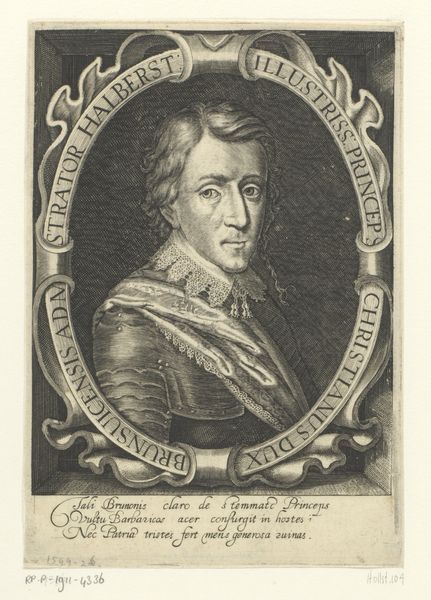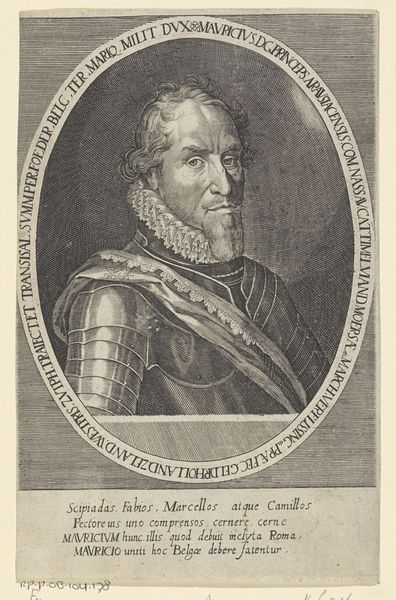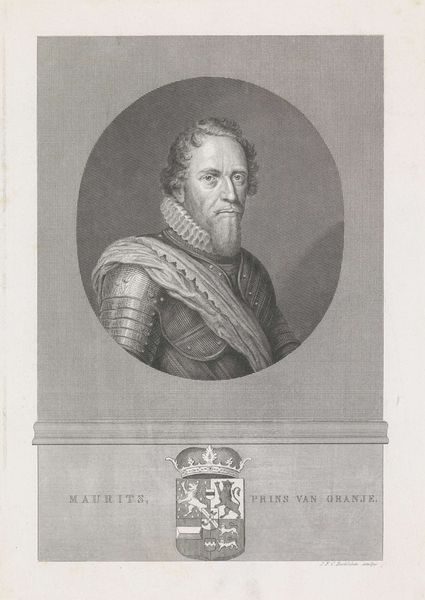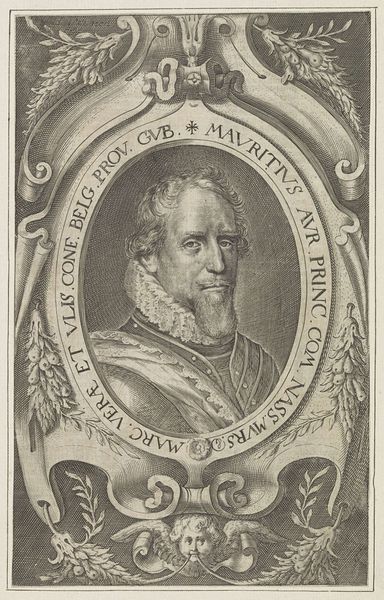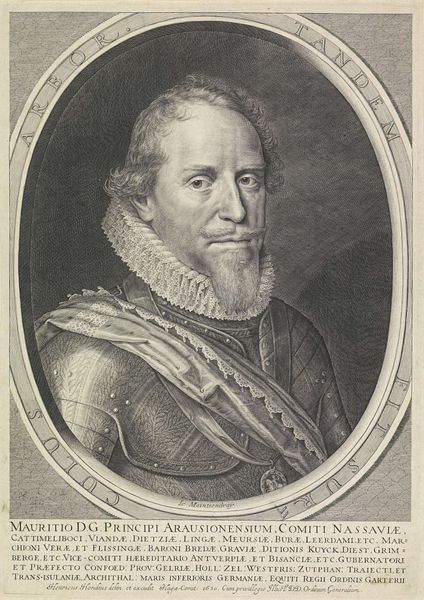
Portret van Maurits, prins van Oranje, op 51-jarige leeftijd 1618 - 1699
0:00
0:00
anonymous
Rijksmuseum
print, engraving
#
portrait
#
baroque
#
dutch-golden-age
# print
#
old engraving style
#
personal sketchbook
#
19th century
#
engraving
Dimensions: height 211 mm, width 144 mm
Copyright: Rijks Museum: Open Domain
Editor: This is a print titled "Portret van Maurits, prins van Oranje, op 51-jarige leeftijd," dating sometime between 1618 and 1699. It’s an engraving by an anonymous artist, housed in the Rijksmuseum. I'm struck by the formal rigidity and the clear display of power. What sociopolitical narratives do you see playing out in this piece? Curator: That’s a perceptive observation! Think about the Dutch Golden Age. What we're seeing is not just a portrait but a carefully constructed representation of power during a period of significant social and political upheaval. This was a time when the Dutch Republic was fighting for independence from Spain, and images like this were crucial in solidifying national identity and leadership. Editor: So it’s like propaganda, then? A tool to construct an image of authority? Curator: Precisely. Look at the way Maurits is presented: the stern expression, the elaborate ruff, the armour – all these elements contribute to an image of a strong, capable leader. The inscription surrounding the portrait, listing his titles and achievements, further reinforces this. How do you think the context of war and religious conflict influenced the artist’s choices? Editor: I suppose the artist aimed to inspire confidence, to assure the public that Maurits was the right man to lead them. I hadn’t considered the role of art in nation-building in this way. Curator: Absolutely. And remember, the intended audience wasn’t just the elite. Prints were relatively accessible, meaning these ideas were disseminated amongst a wider public. This image participates in and shapes contemporary ideas around power, gender, and national identity. Considering this, does it change your initial perception of formality? Editor: Yes, it does! I was thinking about aesthetic choices, but now I see it as part of a much larger conversation. Thanks, I'm understanding more now about the impact this image had at the time. Curator: My pleasure. It is crucial to keep in mind how intertwined art is within political and social frameworks, providing opportunities for discussions around identity and history.
Comments
No comments
Be the first to comment and join the conversation on the ultimate creative platform.
